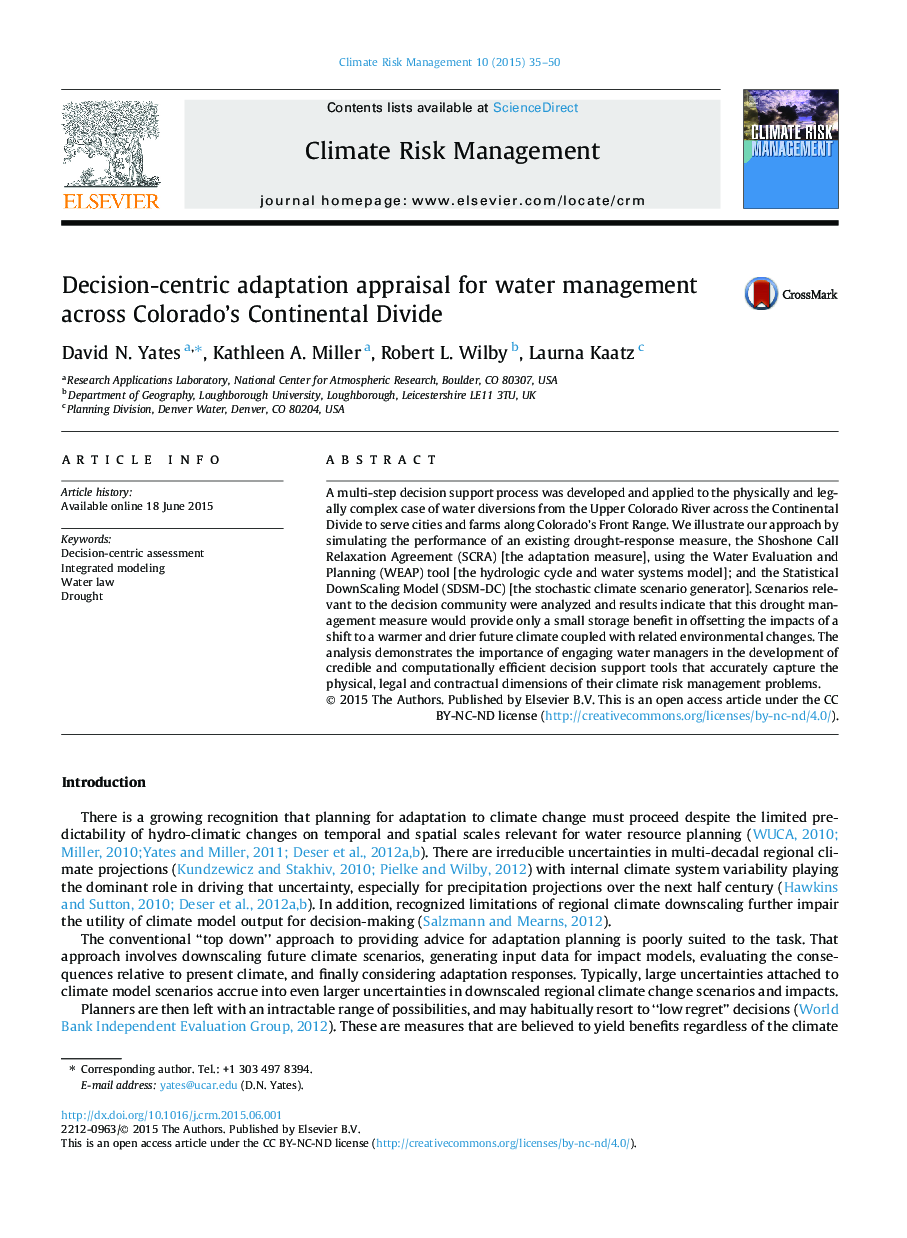| کد مقاله | کد نشریه | سال انتشار | مقاله انگلیسی | نسخه تمام متن |
|---|---|---|---|---|
| 1051215 | 1484882 | 2015 | 16 صفحه PDF | دانلود رایگان |
• We modeled the Upper Colorado River with the WEAP DSS.
• Climate and land surface changes on flow, storage and diversion rights were estimated.
• Drought response measures were implemented in the model.
• Warmer and drier scenarios reduce Colorado River flows and transbasin diversions.
• Drought measures were shown to have a small impact on transbasin water diversions.
A multi-step decision support process was developed and applied to the physically and legally complex case of water diversions from the Upper Colorado River across the Continental Divide to serve cities and farms along Colorado’s Front Range. We illustrate our approach by simulating the performance of an existing drought-response measure, the Shoshone Call Relaxation Agreement (SCRA) [the adaptation measure], using the Water Evaluation and Planning (WEAP) tool [the hydrologic cycle and water systems model]; and the Statistical DownScaling Model (SDSM-DC) [the stochastic climate scenario generator]. Scenarios relevant to the decision community were analyzed and results indicate that this drought management measure would provide only a small storage benefit in offsetting the impacts of a shift to a warmer and drier future climate coupled with related environmental changes. The analysis demonstrates the importance of engaging water managers in the development of credible and computationally efficient decision support tools that accurately capture the physical, legal and contractual dimensions of their climate risk management problems.
Journal: Climate Risk Management - Volume 10, 2015, Pages 35–50
